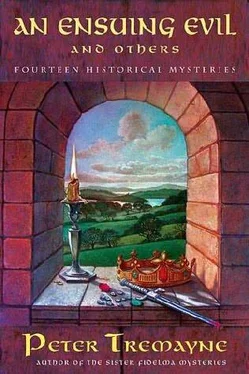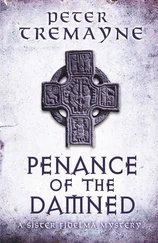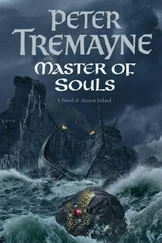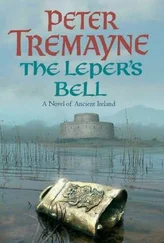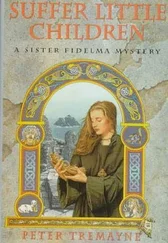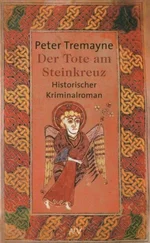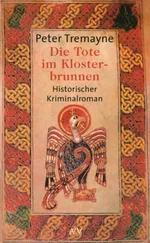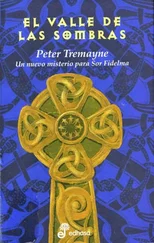Peter Tremayne - An Ensuing Evil and Others
Здесь есть возможность читать онлайн «Peter Tremayne - An Ensuing Evil and Others» весь текст электронной книги совершенно бесплатно (целиком полную версию без сокращений). В некоторых случаях можно слушать аудио, скачать через торрент в формате fb2 и присутствует краткое содержание. Жанр: Исторический детектив, на английском языке. Описание произведения, (предисловие) а так же отзывы посетителей доступны на портале библиотеки ЛибКат.
- Название:An Ensuing Evil and Others
- Автор:
- Жанр:
- Год:неизвестен
- ISBN:нет данных
- Рейтинг книги:5 / 5. Голосов: 1
-
Избранное:Добавить в избранное
- Отзывы:
-
Ваша оценка:
- 100
- 1
- 2
- 3
- 4
- 5
An Ensuing Evil and Others: краткое содержание, описание и аннотация
Предлагаем к чтению аннотацию, описание, краткое содержание или предисловие (зависит от того, что написал сам автор книги «An Ensuing Evil and Others»). Если вы не нашли необходимую информацию о книге — напишите в комментариях, мы постараемся отыскать её.
An Ensuing Evil and Others — читать онлайн бесплатно полную книгу (весь текст) целиком
Ниже представлен текст книги, разбитый по страницам. Система сохранения места последней прочитанной страницы, позволяет с удобством читать онлайн бесплатно книгу «An Ensuing Evil and Others», без необходимости каждый раз заново искать на чём Вы остановились. Поставьте закладку, и сможете в любой момент перейти на страницу, на которой закончили чтение.
Интервал:
Закладка:
Peter Tremayne
An Ensuing Evil and Others
PREFACE
My name now appears to be irrevocably identified as the creator of Sister Fidelma, my seventh-century Irish sleuth. From time to time, readers write to me expressing surprise at having discovered that I have written mysteries set in other historical periods and cultures.
It reminds me of when I was a young aspiring writer. I was attending a launch party for a new Nicholas Blake thriller. Nicholas Blake was the pseudonym of the United Kingdom’s poet laureate of the time, Cecil Day Lewis (1904–1972). I had the temerity to ask the great man why he wrote detective stories under a pseudonym. He took my question in good humor. “Because, young man,” he said graciously, “a poet can’t write detective stories.” He was then drawn away into the wine-guzzling throng, leaving me to ponder on his enigmatic response.
It was some time before I understood what he meant. When a writer is known for producing a certain “product,” it is thought that the public won’t allow him to produce anything different. Poor Arthur Conan Doyle; he was driven to killing off his creation, Sherlock Holmes, in his desire to get recognition for his historical novels. It didn’t work. He had to resurrect Sherlock Holmes, and never fulfilled his ambition to be acclaimed as a great historical novelist.
I am not so extreme as to want to kill off Sister Fidelma to make my point. But the fact is that I have written other tales. As well as my own character creations, sleuths created by other writers in the genre have always fascinated me. I suppose my very first crime mystery novel was a genuflection to Ernest William Hornung (1866–1921) and his creation, Raffles, the “gentleman burglar” whose first stories appeared as The Amateur Cracksman in 1899. Only three books of the adventures of Raffles and his fumbling, unwilling accomplice, Bunny Manders, were published, but they achieved a special place in literary criminology. So I decided to continue the Raffles saga with a novel, The Return of Raffles .
The current collection of short stories is put together to demonstrate my fascination with historical settings for crime, ranging from eleventh-century Scotland to the twenty-first century-set somewhere thirty-two thousand feet above the earth!
The title of the first story, “Night’s Black Angels,” might well be taken from the quote from Shakespeare’s Macbeth and does feature that Scottish monarch, but this is a story of the real historical High King of Scotland, who ruled from 1040 to 1057. There is no real Shakespearean connection. This tale takes place in 1033, seven years before MacBeth (a better way of Anglicizing his real name of MacBheatha mac Findlaech) was elected High King, but just one year after he became mormaer , or “provincial ruler,” of the province of Moray. The murder of Malcolm Mac Bodhe, the brother of Mac-Beth’s wife, Gruoch, is recorded in the ancient annals. Who was responsible? In this tale, it is MacBeth who investigates.
Like most writers, however, I am an enthusiastic admirer of William Shakespeare and a frequent attendee at the Globe Theatre in London. I cannot thank the shade of the late Sam Wanamaker (1919–1993), the actor and director who was the driving force in the project to build an authentic replica of Shakespeare’s Globe Theatre in its original location on London’s south bank, called Bank-side. It was while having a coffee at The Globe after a performance that I conceived the idea of a Shakespearean detective. Master Hardy Drew was the Constable of the Bankside Watch. The crimes he has to solve all occur in and around the Globe. “An Ensuing Evil” was written first and relates directly to events arising from the first performance of All Is True , later printed as Henry the Eighth on June 24, 1613. This was followed by “Methought You Saw a Serpent,” inspired by All’s Well that Ends Well , over which there is some disagreement when it was written. I have opted for 1601 and linked it to the execution of Queen Elizabeth Is one-time favorite, the Earl of Essex. Finally, there is “The Game’s Afoot,” inspired by a line from The Life of King Henry the Fifth .
Some readers may note that the name of Master Hardy Drew is my genuflection to a couple of mystery series that I enjoyed in my youth. The Stratemeyer Syndicate in the United States had conjured into being two series featuring teenage detectives-The Hardy Boys in 1927, written by Franklin W. Dixon, and Nancy Drew in 1929, written by Carolyn Keene. Both were in-house pen names. Seventy years later, the books are still being produced and broadcast on radio and television.
From Shakespeare’s London, we move on to the early nineteenth century, during the Napoleonic wars. The action of “The Revenge of the Gunner’s Daughter” takes place during the siege of Copenhagen in September 1807. The Royal Navy bombarded Copenhagen for four days, even though Britain and Denmark were not at war. The attack was to persuade the Danish Regent to surrender his fleet to Britain so that it would not be captured and used by the French. Since I was twelve years old, I have been a devotee of C. S. Forester, devouring all the Hornblower novels. I was intrigued with the idea of how a murder on board a Royal Navy ship o’ war in Napoleonic times might turn out.
We move on to the mid-nineteenth century and the immortal Charles Dickens. “The Passing Shadow” not only features that redoubtable writer as the detective, but also his “sidekick” son-in-law, Charles Collins, a writer, as well, and the brother of Wilkie Collins, who is credited with writing the first modern detective novel: The Moonstone (1868). Although Dickens and his in-laws intrigued me, it was the location that drew me to write the story. It is set in the ancient fifteenth-century tavern, The Grapes, in London’s Narrow Street, standing by the River Thames, near Wapping Steps. It was a favorite location for Dickens, and in addition, his godfather used to be a ship’s chandler nearby. Dickens’s father had stood the young boy on a table in that little tavern and made him sing to the assembly. Dickens describes the inn in Dombey and Son (1848) and used it as a major-setting in Our Mutual Friend (1864). It still stands, and I have often been there, imagining Dickens in the little crowded bar. I once hired the tiny restaurant room upstairs, overlooking the brooding Thames waters, for a birthday celebration for my wife, Dorothy. How could a writer not use such a location to set a Victorian London detective tale?
I doubt whether any writer of mysteries in the world has not been tempted to write a Sherlock Holmes tale, even if they have not actually done so. There are five of my own Sherlock Holmes tales here. The link among all five tales is that I have depicted Sherlock Holmes’s background as an Anglo-Irish one. His creator, Arthur Co-nan Doyle, was the grandson of John Doyle (1797–1868), an impoverished Irish Catholic who left Dublin in his mid-twenties because the Penal Laws discriminating against Catholics prevented him from earning a living as a portrait painter. He became a famous cartoonist in London. One of his sons moved to Scotland, married an Irish girl, Mary Foley, and Arthur Conan Doyle was born in Edinburgh. The Sherlock Holmes tales are replete with Irish names. One thinks of the names of Holmes’s chief enemies, Moriarty and Moran, for a start. Conan Doyle was all too well aware of his Irish ancestry and background. I have opted for Holmes paralleling the educational career of his fellow Irishman, the poet and playwright, Oscar Wilde. Holmes first studies at Trinity College, Dublin, and then obtains a scholarship to Oxford. “The Affray at the Kildare Street Club,” set in Dublin, is, according to my chronology, his first case. The stories are often inspired by throwaway references in Conan Doyle’s own stories. For example, “The Specter of Tullyfane Abbey” derives from the line in “Thor Bridge,” where reference is made to an unrecorded case concerning James Phillimore, “who stepped back into his house to get his umbrella and was never seen again.” And in “The Siren of Sennen Cover,” we learn what Holmes was doing when, according to “The Devils Foot,” he wrote his monograph on Chaldean Roots in the Ancient Cornish Language . These stories, then, are my “hat doffing” to one of the greatest detective writers of all time.
Читать дальшеИнтервал:
Закладка:
Похожие книги на «An Ensuing Evil and Others»
Представляем Вашему вниманию похожие книги на «An Ensuing Evil and Others» списком для выбора. Мы отобрали схожую по названию и смыслу литературу в надежде предоставить читателям больше вариантов отыскать новые, интересные, ещё непрочитанные произведения.
Обсуждение, отзывы о книге «An Ensuing Evil and Others» и просто собственные мнения читателей. Оставьте ваши комментарии, напишите, что Вы думаете о произведении, его смысле или главных героях. Укажите что конкретно понравилось, а что нет, и почему Вы так считаете.
